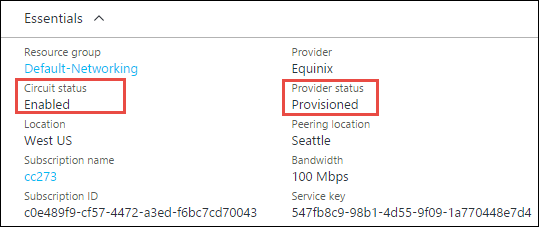Manual Chapter :
Configuring Cloud Interconnection for Azure
Applies To:
Show Versions
BIG-IP AAM
- 14.1.5, 14.1.2, 14.1.0, 14.0.1, 14.0.0, 13.1.5, 13.1.4, 13.1.3, 13.1.1, 13.1.0, 13.0.1, 13.0.0, 12.1.5, 12.1.4, 12.1.3, 12.1.2, 12.1.1, 12.1.0
BIG-IP APM
- 14.1.5, 14.1.4, 14.1.3, 14.1.2, 14.1.0, 14.0.1, 14.0.0, 13.1.5, 13.1.4, 13.1.3, 13.1.1, 13.1.0, 13.0.1, 13.0.0, 12.1.6, 12.1.5, 12.1.4, 12.1.3, 12.1.2, 12.1.1, 12.1.0
BIG-IP LTM
- 14.1.5, 14.1.4, 14.1.3, 14.1.2, 14.1.0, 14.0.1, 14.0.0, 13.1.5, 13.1.4, 13.1.3, 13.1.1, 13.1.0, 13.0.1, 13.0.0, 12.1.6, 12.1.5, 12.1.4, 12.1.3, 12.1.2, 12.1.1, 12.1.0
BIG-IP AFM
- 14.1.5, 14.1.4, 14.1.3, 14.1.2, 14.1.0, 14.0.1, 14.0.0, 13.1.5, 13.1.4, 13.1.3, 13.1.1, 13.1.0, 13.0.1, 13.0.0, 12.1.6, 12.1.5, 12.1.4, 12.1.3, 12.1.2, 12.1.1, 12.1.0
BIG-IP DNS
- 14.1.5, 14.1.4, 14.1.3, 14.1.2, 14.1.0, 14.0.1, 14.0.0, 13.1.5, 13.1.4, 13.1.3, 13.1.1, 13.1.0, 13.0.1, 13.0.0, 12.1.6, 12.1.5, 12.1.4, 12.1.3, 12.1.2, 12.1.1, 12.1.0
BIG-IP ASM
- 14.1.5, 14.1.4, 14.1.3, 14.1.2, 14.1.0, 14.0.1, 14.0.0, 13.1.5, 13.1.4, 13.1.3, 13.1.1, 13.1.0, 13.0.1, 13.0.0, 12.1.6, 12.1.5, 12.1.4, 12.1.3, 12.1.2, 12.1.1, 12.1.0
Create an ExpressRoute circuit in the Azure portal
Equinix requires that
you create an ExpressRoute circuit in order to set up
connections in the Equinix portal.
Create connections for Azure in the Equinix portal
You must create virtual circuits
over the dedicated links that are directly connected to the BIG-IP®
systems.
Within a few minutes, the state of
the connection in Azure changes to Provisioned.
Create a connection and peering in the Azure portal
In the Azure portal, open the
ExpressRoute and confirm that the Circuit status is
Enabled and Provider status is
Provisioned.

Azure requires you to configure peering and connections that the ExpressRoute will terminate on.
- Select the ExpressRoute you created.
- Click Connections and create one.
-
Click Peerings and create a private peering.
Option Description Peer ASN For example, 22317. Primary subnet For example, 172.16.1.0/30. Secondary subnet For example, 172.16.1.4/30. VLAN ID For example, 3011. Shared key For example, gf43jsd92ksa-djkakf. - Click Save.





